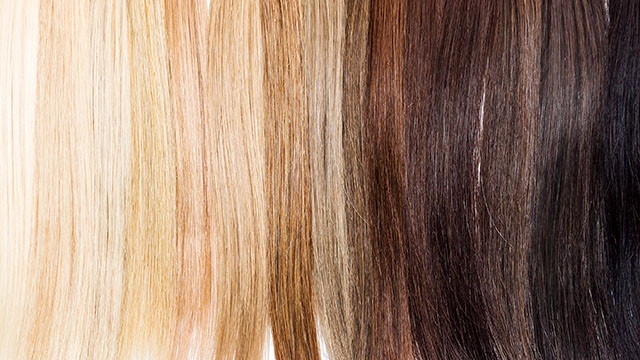Nov 2 2020
Dyeing hair at home and in salons has its own risks. Products used can create skin irritation and allergies—nearly 1% of people are allergic to the dye. Moreover, the frequent use of certain dyes has been related to cancer.
 Synthetic melanin can create colors ranging from blond to black. Image Credit: Northwestern University.
Synthetic melanin can create colors ranging from blond to black. Image Credit: Northwestern University.
However, there soon could be an answer to the increasing number of salons and hair color fanatics seeking natural alternatives to cosmetics and dyes.
A team of scientists from Northwestern University has formulated a new method to develop a range of natural-looking hair colors, from blond to black, which involves using enzymes to catalyze synthetic melanin.
The study was published in the October 30th issue of the Chemistry of Materials journal.
Melanin is a mysterious and universal material usually found in black or brown pigment form. According to Nathan Gianneschi, the research lead and associate director for the International Institute for Nanotechnology, Northwestern University, every type of organism generates melanin, making it an easily available and adaptable material to use in the lab.
In humans, it’s in the back of our eye to help with vision, it’s in our skin to help with protecting skin cells from UV damage. But birds also use it as a spectacular color display—peacock feathers are made of melanin entirely.
Nathan Gianneschi, Research Lead and Associate Director, International Institute for Nanotechnology, Northwestern University
Gianneschi is also the Jacob and Rosalind Cohn Professor of Chemistry in Northwestern’s Weinberg College of Arts and Sciences and a professor of materials science and engineering and biomedical engineering in the McCormick School of Engineering. The first author of the study is Claudia Battistella, who is a postdoctoral fellow in Gianneschi’s lab.
In the standard method of hair coloring, stylists apply bleach to remove melanin from hair, and then add ammonia and dye to open and penetrate the hair cuticles for permanent color. Research being performed with melanin in other parts of the lab prompted Battistella to understand how it applied to hair dye.
Battistella believed melanin could be replaced rather than being eliminated and color could be deposited on the surface of hair rather than within it to develop a more sustainable way to produce lasting color.
In this method, scientists dye the hair by mixing mushroom enzymes with an amino acid, resulting in a process that imitates reactions that naturally take place in the body. Pilot studies revealed the possibility for the colored layer to endure a number of washes.
The dyeing process is similar from a stylist’s point of view, but these conditions are milder, so they take a little longer. Though it could be combined with a base, it’s not necessary to use one, and there is no need for chemical pigments. Because we already have melanin in our bodies, we believe we won’t have allergic reactions to it.
Claudia Battistella, Study First Author and Postdoctoral Fellow, Northwestern University
As melanin also fades in hair because of aging and sun exposure, the team also looked into the sun’s influence on the dye. Apart from being a milder process than conventional dye, coating hair in synthetic melanin could guard hair from sun damage that can lead to whitening. Studies revealed that in contrast to untreated hair, hair coated with melanin pigment sustained less damage upon exposure to UV rays.
The research identifies four main advantages to the use of synthetic melanin rather than traditional dyes:
- The precursors of treating hair with melanin are less lethal.
- Synthetic melanin avoids ammonia usage as a base layer.
- The process employs safer, more scalable chemicals.
- There is huge potential in cosmetic translations of synthetic melanin in the future.
With the industry’s wish to transition from carcinogens and other lethal chemicals, Gianneschi feels his lab would be successful in breaking through the regulatory industry. The researchers next expect to find a partner ready to mass-produce the dye. According to Gianneschi, the main inspiration for the research is not merely excitement over melanin’s massive commercial use.
From a biomedical perspective, there’s a huge market of people with a hair dye allergy. Our first thought was it would be great to have a solution to help those people.
Nathan Gianneschi, Research Lead and Associate Director, International Institute for Nanotechnology, Northwestern University
Journal Reference:
Battistella, C., et al. (2020) Bioinspired Chemoenzymatic Route to Artificial Melanin for Hair Pigmentation. Chemistry of Materials. doi.org/10.1021/acs.chemmater.0c02790.